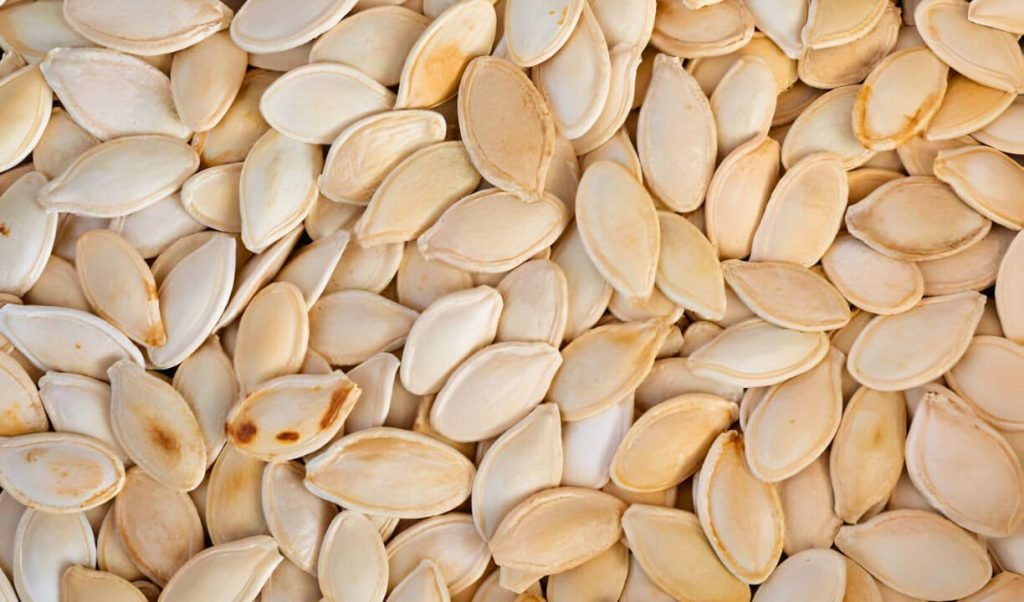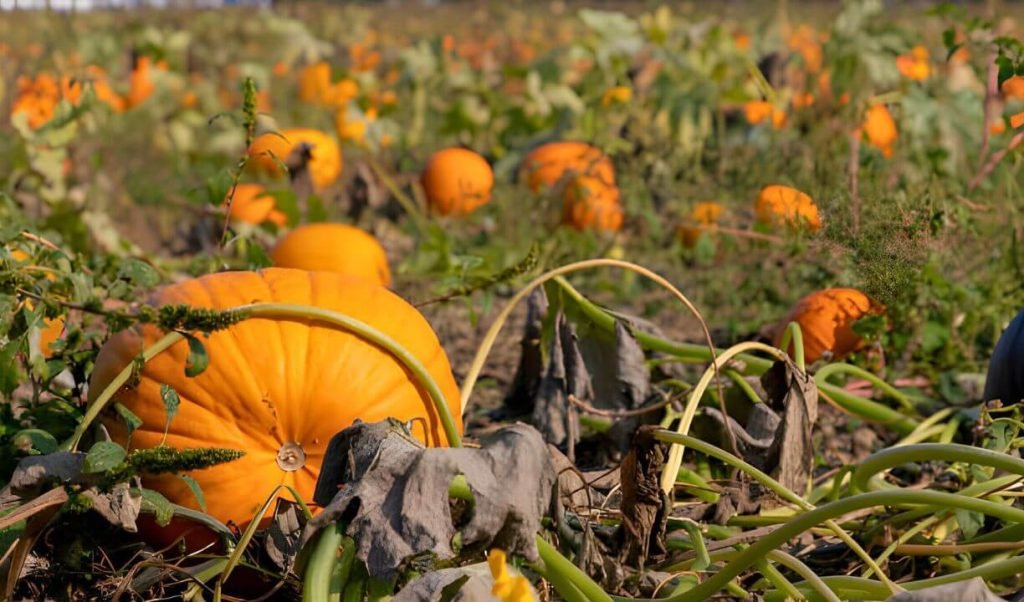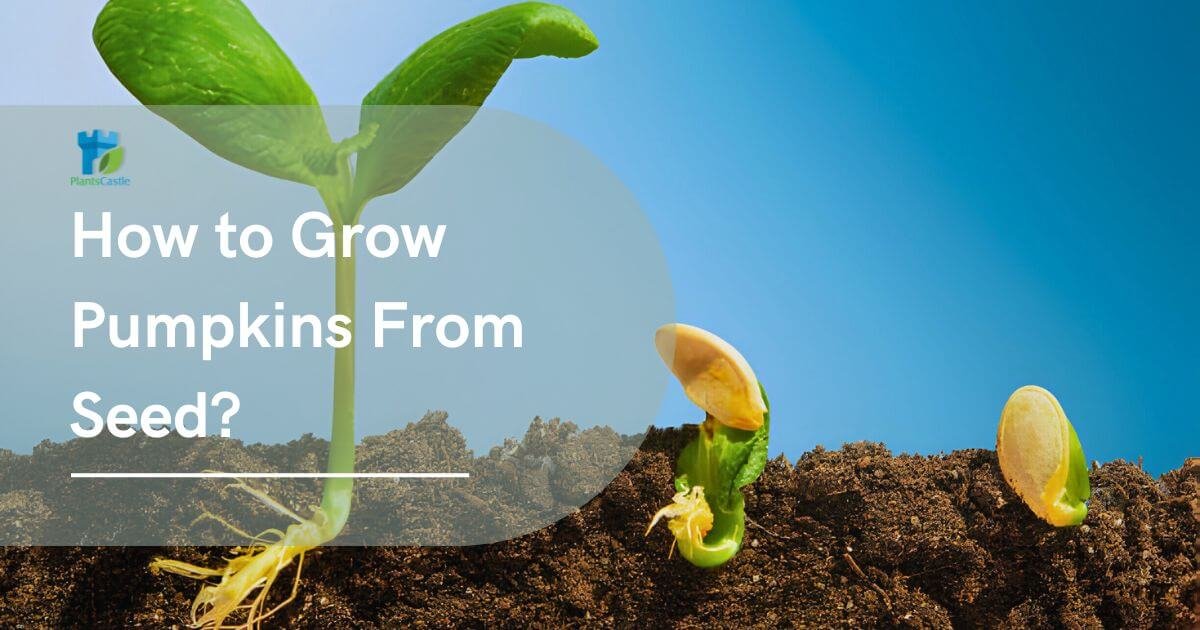Caring for homegrown pumpkins in the ground might be time-consuming, but if you follow a pattern, you’ll have large orange pumpkins in your garden in no time. That means more carving, baking, and fall decorations.
An eye-catching vegetable, pumpkins come in various shapes, sizes, colors, and textures. Some plant lovers want to know how to grow pumpkins from seed, they are quite simple to produce from seed. Small pumpkins can be grown from seed in containers with vine poles or near walls where the vines can climb.
In this guide, we’ll deeply explain the growth of pumpkins from seed. Like other seeds, pumpkin seeds only require a few elements to grow. Let’s go on.
What is Pumpkin?
Pumpkin is a nutritious, adaptable food that contains fiber, vitamins, minerals, and antioxidants. Most of pumpkin’s health advantages are related to its high fiber content and micronutrients, such as vitamin A and beta-carotene.
Pumpkins with vibrant colors and versatile uses, are the symbol of autumn. Whether aiming for the Halloween lateens’ or making pies on Thanksgiving, they are the best for every use.
How To Grow Pumpkins From Seed?
Following are the steps that are required to grow pumpkin:
1. Selecting of Seeds
Before planting, it is necessary to choose the right seeds. You can choose a variety of pumpkin shaving varieties of characteristics like size, color, shape, and taste.

2. Preparing the Soil to Cultivate the Seeds
Choose a sunny place in your garden, where the sun remains for at least six to eight hours every day. Begin the digging of soil 12 inches depth and remove any kind of weed, rock, and other fungi. Incorporate compost and age manure to increase the fertility of the soil and also neutralize the acidity level of the soil.
3. Planting the Seeds
Once the soil is prepared, now it is time to plant the seeds. For indoor cultivation, you have to sow the seed at least once in the chin of the soil.
Try to keep the soil moist and maintain the temperature of the soil. For outdoor plants, you have to sow the seed at least 2 to 3 feet deeper. Cloches or polythene sheeting can be used to cover the ground and warm the soil for a few weeks before seeding. Water the seeds regularly and keep them safe from slugs and fungi.
4. Fertilizing and Feeding
Pumpkin plants are heavy feeders and benefit from regular fertilizer throughout the season. A balanced fertilizer at planting time compost or a nitrogen fertilizer every week.
5. Harvesting
Pumpkins are typically ready for harvest in 75 to 100 days, depending on verity. Use a knife or pruning shears to cut the pumpkin from the vine, leaving a few inches of stem attached. Handle pumpkins carefully to avoid bruising or damage.

What Are The Benefits Of Pumpkin?
The following are the benefits of pumpkin:
Improve your Vision
Through scientific study, it has been proved that pumpkins can enhance the vision of humans. It supports the health of the retina of the eye. Additionally, pumpkins are a good source of vitamin C, which lowers your risk of cataracts and macular degeneration.
Reduce the Risk of Cancer
As the Pumpkins are rich in vitamin A, they also lower your risk for certain types of cancer, including prostate and lung cancer.
Boost the Immunity
Including pumpkin in your diet helps strengthen your immune system’s ability to combat infections. Beta carotene, iron, folate, and vitamins C and E are all found in pumpkins, and they all support a stronger immune system.
Benefit for the Health of the Heart
Numerous elements found in pumpkins help strengthen your heart. It has been associated with heart health advantages because of its high potassium, vitamin C, and fiber content.
FAQs
1. Is the pumpkin vegetable or fruit?
Pumpkin is a vegetable enriched with nutrients and vitamins. It is a very healthy and fresh vegetable that helps with the cure of a lot of diseases.
2. How long does pumpkin take to form seed?
It takes 90 to 120 days to form a seed under optimum conditions. It is fertilized regularly throughout the season.
3. Why pumpkin is a superfood?
It is higher in fiber which helps with sugar management which helps to keep you satisfied and helps with good health and digestion. It keeps the stomach’s acidity constant.
4. How to keep lateen preserved?
When a pumpkin is not being shown, cover it with a damp cloth to prevent it from drying out. To make your pumpkin last longer, wait for half an hour after you finish carving, then rub the cut areas and inside with a dry cloth and apply a protective coating such as petroleum jelly, clear furniture wax, or vegetable oil painted on with a brush. A glossy finish can be achieved by applying multiple layers of lacquer or hair spray, as some skilled pumpkin carvers do.
5. How to cook the pumpkin?
Smaller, pie pumpkin varieties such as the New England Sugar or Baby Pam are good to use for cooking because they have a sweeter flavor. Select a pumpkin that weighs between three and five pounds, has a firm peel, and is devoid of any dents or bruises. About 1 cup of pumpkin puree can be made from a 3½ lb. pumpkin. Fresh pumpkin can be baked, boiled, steamed, or pressure-cooked.
Conclusion
In conclusion, this article briefly explains the confusion of users about how to grow pumpkins from seed. Growing pumpkins from seed is a fulfilling journey that allows you to connect with the natural world and enjoy the fruits of your labor. As it is a very healthy food that also keeps us healthy and fit. By consuming it, our body remains in good shape. It is also used to decorate our house on Halloween. We can also make pies from it and give them to our friends, family, and relatives on Thanksgiving or New Year’s Eve.

